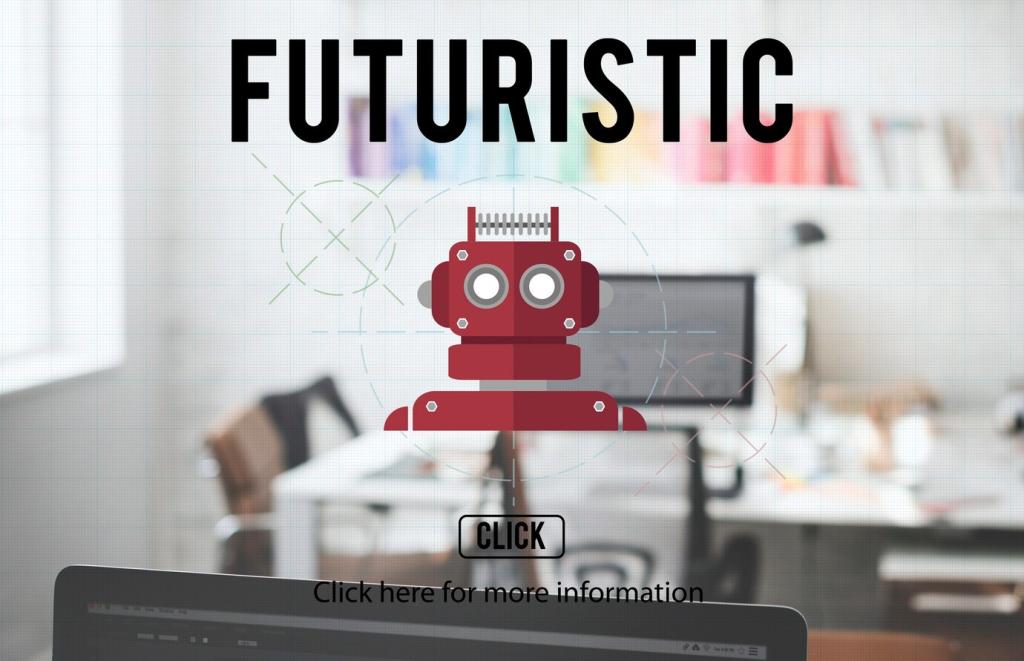AI-Enhanced Product Development Techniques: Build Smarter, Faster, Better
Chosen theme: AI-Enhanced Product Development Techniques. Welcome to your launchpad for blending human creativity with machine intelligence across discovery, design, engineering, and growth. Dive in, share your experiences, and subscribe for weekly breakthroughs and field-tested playbooks.
Mapping the AI-Driven Product Lifecycle
Discovery with Data Signals
Use machine learning to mine support tickets, search logs, and community threads for unmet needs. Let clustering and anomaly detection surface patterns humans miss, then invite your team to interpret, prioritize, and transform signals into testable opportunity narratives.
AI-First Roadmapping
Turn noisy backlog items into structured roadmaps by scoring impact, effort, and risk with predictive models. Blend historical velocity, dependency graphs, and customer value forecasts to plan intentionally, update continuously, and say no gracefully with transparent, data-aware rationale.
Continuous Learning Loops
Instrument every feature with clear event taxonomies. Feed outcomes back into ranking models to refine prioritization. Celebrate when experiments invalidate assumptions quickly, because learning quickly is the real competitive advantage in AI-accelerated product development.

Transcribe interviews, support calls, and sales demos with speech-to-text, then let large language models extract intents, objections, and jobs-to-be-done. Use highlight reels to align stakeholders, and invite readers to share favorite prompts for interview debriefs.

Segment users by in-product behaviors using unsupervised learning. Evolve personas from static slides to living profiles with changing needs, preferred flows, and churn risk probabilities. Ask your community which behavioral signals they find most predictive and actionable.

Track sentiment across reviews, forums, and social posts, flagging emerging themes before they explode. Topic drift alerts help you adapt messaging and roadmap priorities. Subscribe to receive a monthly checklist for always-on voice-of-customer monitoring.
Ideation and Concept Validation with Generative AI
Run time-boxed sprints where prompts generate dozens of solution sketches across constraints, platforms, and customer segments. Score ideas using weighted criteria, and invite the community to suggest prompt frameworks that consistently yield non-obvious yet feasible concepts.
Ideation and Concept Validation with Generative AI
Combine generative UI mocks, synthetic test data, and interactive flows to simulate the experience within hours. Validate desirability through reaction tests and preference rankings. Share your best practice for moving from concept to clickable prototype in a single day.


Design and UX with AI Co-creators
01
Adaptive Design Systems
Train models to suggest responsive layouts, component choices, and spacing based on content density and task complexity. Maintain design tokens as a source of truth. Ask readers how they keep AI-generated variations faithful to brand while enabling personalization.
02
Accessibility by Default
Automate color contrast checks, alt text generation, and keyboard navigation audits. Use classifiers to detect complex gestures that block users. Invite community stories about how automated accessibility reviews improved inclusivity and revealed unexpected usability wins.
03
Microcopy and Tone Calibration
Generate microcopy variants aligned to tone, reading level, and regulatory constraints. Test clarity and confidence through comprehension surveys. Share your prompt recipe for persuasive yet trustworthy onboarding copy that reduces abandonment and increases first-week activation.
AI-Augmented Engineering and Delivery
Intelligent Spec-to-Code
Convert structured requirements into scaffolded code, tests, and docs. Keep humans in the loop for architecture, security decisions, and trade-offs. Encourage engineers to share guardrails that keep generated code idiomatic, secure, and maintainable over long product lifecycles.
Automated Quality and Resilience
Use AI to generate test cases, fuzz inputs, and detect flaky tests. Predict hotspots from commit history and runtime telemetry. Invite readers to discuss how predictive alerts changed their approach to incident prevention and on-call preparedness.
Feature Flags and Safe Launches
Blend feature flags with anomaly detection to roll out gradually, measure uplift, and auto-pause when metrics degrade. Share a story where progressive delivery saved a launch, and subscribe for our step-by-step safe deployment playbook.

North-Star Metrics and Causal Inference
Define a north-star tied to customer outcomes, not vanity surface metrics. Use causal inference to understand true impact when A/B tests are impractical. Ask readers which metrics best represent durable value in their domains.

Experiment Platforms at Scale
Standardize hypothesis templates, guardrail metrics, and exposure controls. Automate power analysis, bucketing, and sequential testing. Encourage teams to share templates that made experimentation faster, safer, and easier to interpret across multiple product squads.

Responsible AI and Governance
Establish review rituals for data provenance, bias checks, and model monitoring. Document decisions in plain language. Invite subscribers to contribute examples of ethical dilemmas and how governance frameworks helped resolve tension between opportunity and responsibility.

